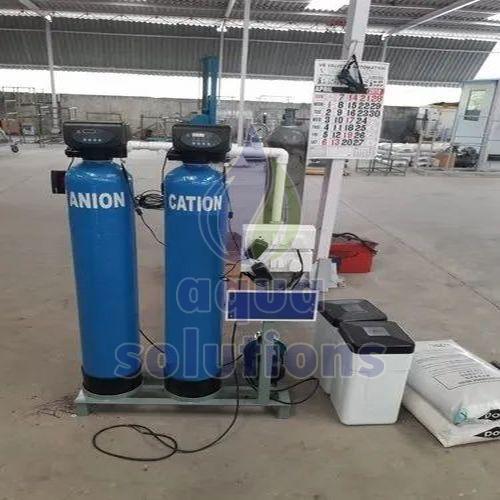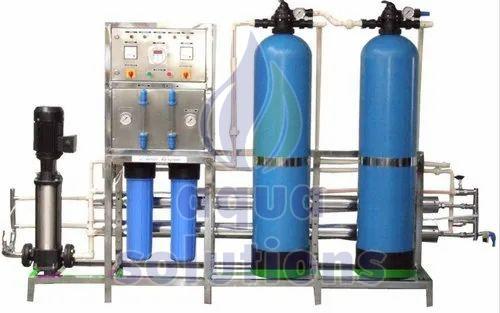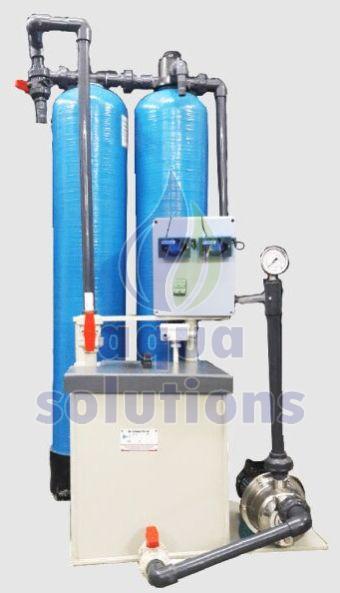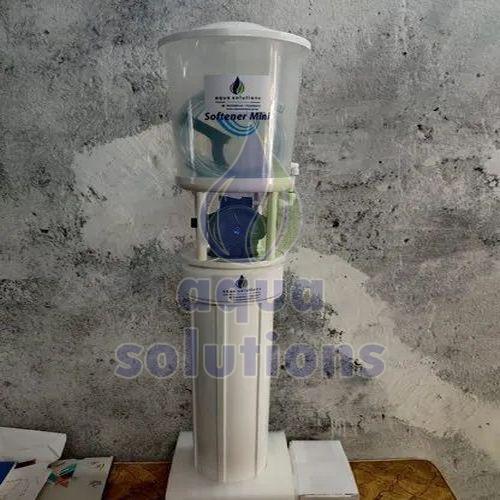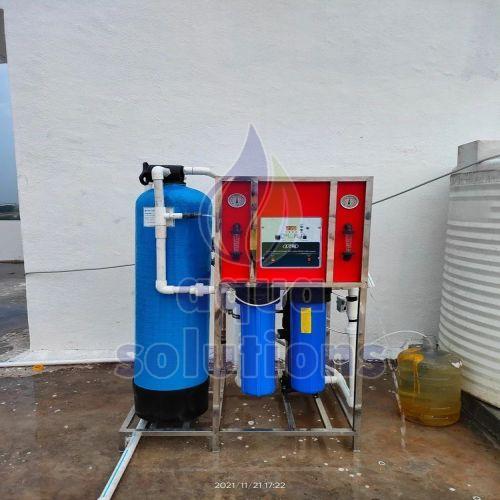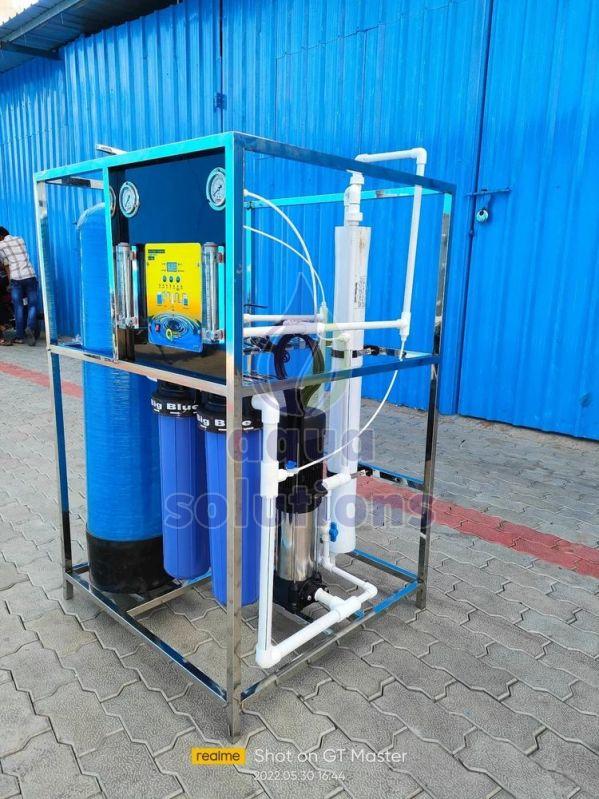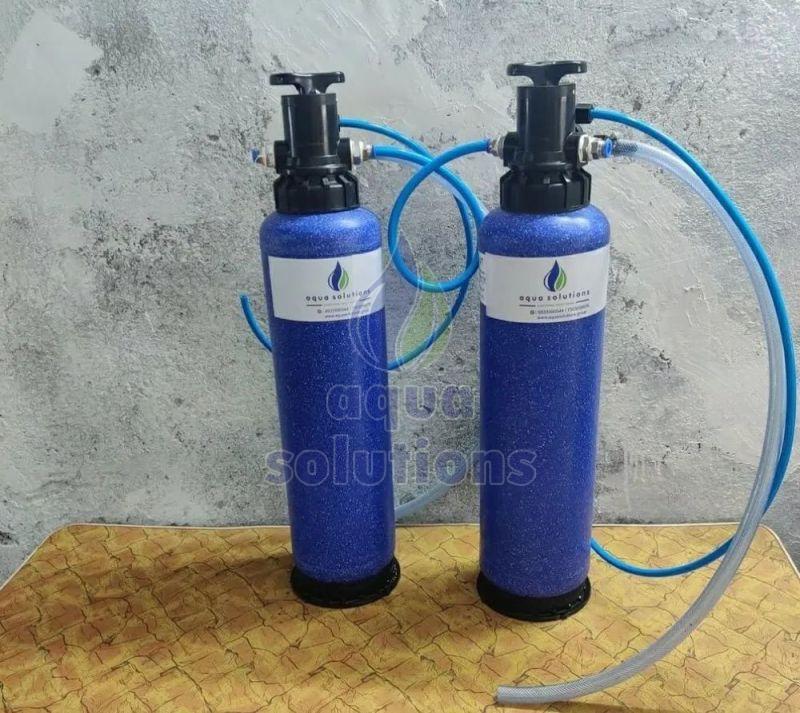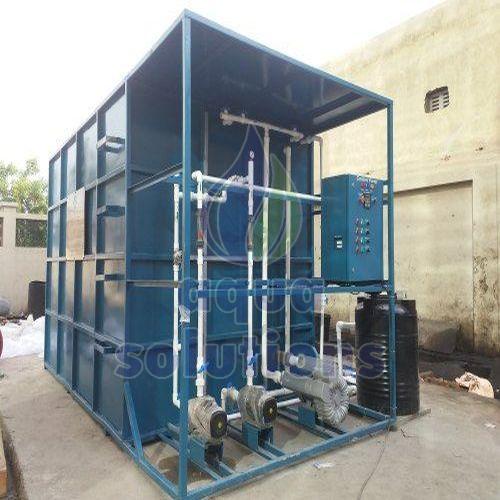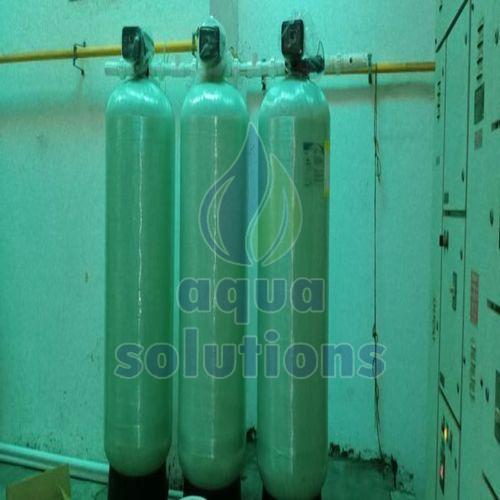aquasolutions87@gmail.com - GST NO. : 27AHBPJ8891L1ZP
Water Softening & Demineralization
Leading Manufacturers, Exporters, Wholesaler of Auto DM Water Plant, Commercial Water Softening Plant, Demineralised Water Plant System, Mini Water Softener, Semi Automatic DM Water Plant, Sewage Treatment Plant and Water Softener System from Mumbai.
| Business Type | Exporter, Supplier |
| Capacity | 500 LPH |
| Inlet Flow Rate | 100 M³/hour |
| Automatic Grade | Automatic |
| Application | Industrial |
| Water Source | Borewell Water |
| Material Of Construction | FRP / MS |
| Country of Origin | Made In India |
| Business Type | Exporter, Supplier |
| Application | Commercial |
| Automatic Grade | Automatic |
| Water Source | River Water |
| Capacity | 1200 L/h |
| Softener Tank Type | Vertical |
| cleaning system | RO |
| Body Material | Mild Steel |
| Power Source | Electric |
| Country of Origin | Made In India |
| Business Type | Manufacturer, Exporter, Supplier |
| Voltage | 220V |
| Country of Origin | Made In India |
| Application | Water Filtration |
| Capacity Inlet Flow Rate | 1200 L/h |
| Flow Rate | 100 M3/hour |
| Water Source | Borewell Water |
| Capacity | 500 LPH |
| Inlet Flow Rate (m3/hr) | 100 M3/hour |
| Automation Grade | Automatic |
| Power Consumption | 1.5 KW |
| Business Type | Manufacturer, Exporter, Supplier |
| Type | Mini Water Softener |
| Material | FRP |
| Application | Domestic |
| Automatic Grade | Semi Automatic |
| Water Source | Borewell Water |
| Softener Tank Type | Vertical |
| Brand Name | AQUA SOLUTIONS |
| Country of Origin | Made In India |
| Business Type | Exporter, Supplier |
| Type | DM (Deionized / De-mineralized) Water Plant |
| Automatic Grade | Semi Automatic |
| Material | FRP / MSRL / SS 304 (as Per Requirement) |
| Process | Ion Exchange (Cation + Anion Resin) |
| Output TDS | < 5 Ppm (typically) |
| Capacity Range | 500 LPH To 50,000+ LPH |
| Application | Pharma, Electronics, Laboratories, Boilers, Battery Water |
| Country of Origin | Made In India |
| Business Type | Manufacturer, Exporter, Supplier |
| Country of Origin | India |
| Material | RCC, MS, FRP-based Construction |
| Application | Residential Complexes, Hotels, Hospitals, Institutions, Municipalities |
| Function | Treats Domestic Sewage For Safe Discharge Or Reuse |
| Treatment Stages | Primary, Secondary (Biological), Tertiary |
| Technology | MBBR, SBR, ASP, MBR (as Per Design) |
| Flow Capacity | 1 KLD To 1 MLD+ (customizable) |
| Automation | Manual, Semi-Auto, Or Fully Automatic With SCADA |
| Effluent Quality | BOD < 10 Mg/L, TSS < 10 Mg/L (Reuse Grade) |
| Sludge Handling | Sludge Drying Bed, Filter Press |
| Product Code | 8421 |
| Port | Nava Sheva |
| Payment Terms | T/T, Other |
| Delivery Time | 4 to 5 Weeks |
| Packaging Details | Sea Worthy Wooden Packing |
Sewage Treatment Plant (STP) – Overview
A Sewage Treatment Plant (STP) is an engineered facility designed to treat wastewater by removing contaminants before safe discharge or reuse. It employs a combination of physical, chemical, and biological processes to handle sewage from residential, commercial, and industrial sources. The result is treated water (effluent), which can either be safely released into natural water bodies or reused for non-potable purposes.
Key Components and Treatment Stages 1. Preliminary Treatment
This initial phase removes large solids like rags, plastics, and grit using screening systems and grit chambers.
2. Primary Treatment
Sedimentation tanks allow heavier particles to settle, forming primary sludge, which is separated from the clarified water.
3. Secondary Treatment
Biological processes involving microorganisms degrade dissolved and suspended organic matter, reducing the Biological Oxygen Demand (BOD) and pollutants.
4. Tertiary Treatment (Optional)
Advanced purification steps like filtration, UV disinfection, or chemical dosing may be applied depending on the end-use of the treated water.
5. Sludge Treatment and Disposal
Sludge collected from various treatment stages undergoes further processing—typically digestion, thickening, or dewatering—and is then properly disposed of or reused.
Purpose and Importance
Environmental Protection
Helps prevent contamination of water bodies by effectively removing pollutants.Public Health Safeguard
Reduces disease transmission by treating sewage that may carry harmful pathogens.Water Conservation
Treated water can be reused for flushing, irrigation, cooling towers, or landscaping, thus supporting sustainable resource management.Regulatory Compliance
Ensures that effluent discharge meets prescribed environmental norms and legal standards.
| Business Type | Manufacturer, Exporter, Supplier |
| Application | Boiler Feed,RO Pre-treatment,Cooling Towers,Laundry,Hotels,Pharma |
| Function | Removes Hardness (Calcium & Magnesium) |
| Technology | Ion Exchange Process |
| Resin Type | Cation Exchange Resin (Food/Industrial Grade) |
| Regeneration | With Sodium Chloride (NaCl) Brine Solution |
| Control Valve | Manual, Semi-auto, Or Fully Automatic |
| Vessel Material | FRP / MSRL / SS 304 Or 316 |
| Flow Rate | 500 LPH To 50,000+ LPH |
| Automation | Timer-based Or Flow-based Regeneration |
| Product Code | 8421 |
| Port | Nava Sheva |
| Payment Terms | T/T, Other |
| Delivery Time | 2 to 3 Weeks |
| Packaging Details | Sea Worthy Wooden Packing |
Water Softener Plant
A water softener plant is a system designed to remove hardness-causing minerals—primarily calcium and magnesium—from water through a process known as ion exchange. This results in softened water, which helps prevent scale buildup, protects pipelines and appliances, and enhances the effectiveness of soaps and detergents. These systems are widely used in residential, commercial, and industrial settings.
How It Works
Resin Beads
The central component is a tank filled with resin beads, typically made from polystyrene, coated with sodium or potassium ions.
Ion Exchange Process
As hard water passes through the resin bed:
Calcium and magnesium ions in the water are attracted to the resin.
These hardness ions are exchanged for sodium or potassium ions.
The softened water continues on for use, now free of most hardness minerals.
Softened Water Output
The water leaving the resin tank has significantly reduced hardness, minimizing scale formation and improving water compatibility with equipment and cleaning agents.
Regeneration
Over time, resin beads become saturated with calcium and magnesium ions.
To restore effectiveness:
A brine solution (typically made from sodium chloride) is flushed through the resin.
This process recharges the beads with sodium or potassium ions, and flushes out the hardness minerals to the drain.
The cycle then repeats for continuous operation.
Types of Water Softener Plants
Automatic Systems
Operate fully automatically using time-based or flow-based controls.
Initiate regeneration cycles based on usage or preset intervals.
Require minimal human intervention.
Semi-Automatic Systems
Partially automated; operators manually initiate regeneration.
Suitable for facilities with predictable water usage patterns.
Manual Systems
Require full manual control to perform regeneration cycles.
Typically used in small-scale or low-budget operations.

